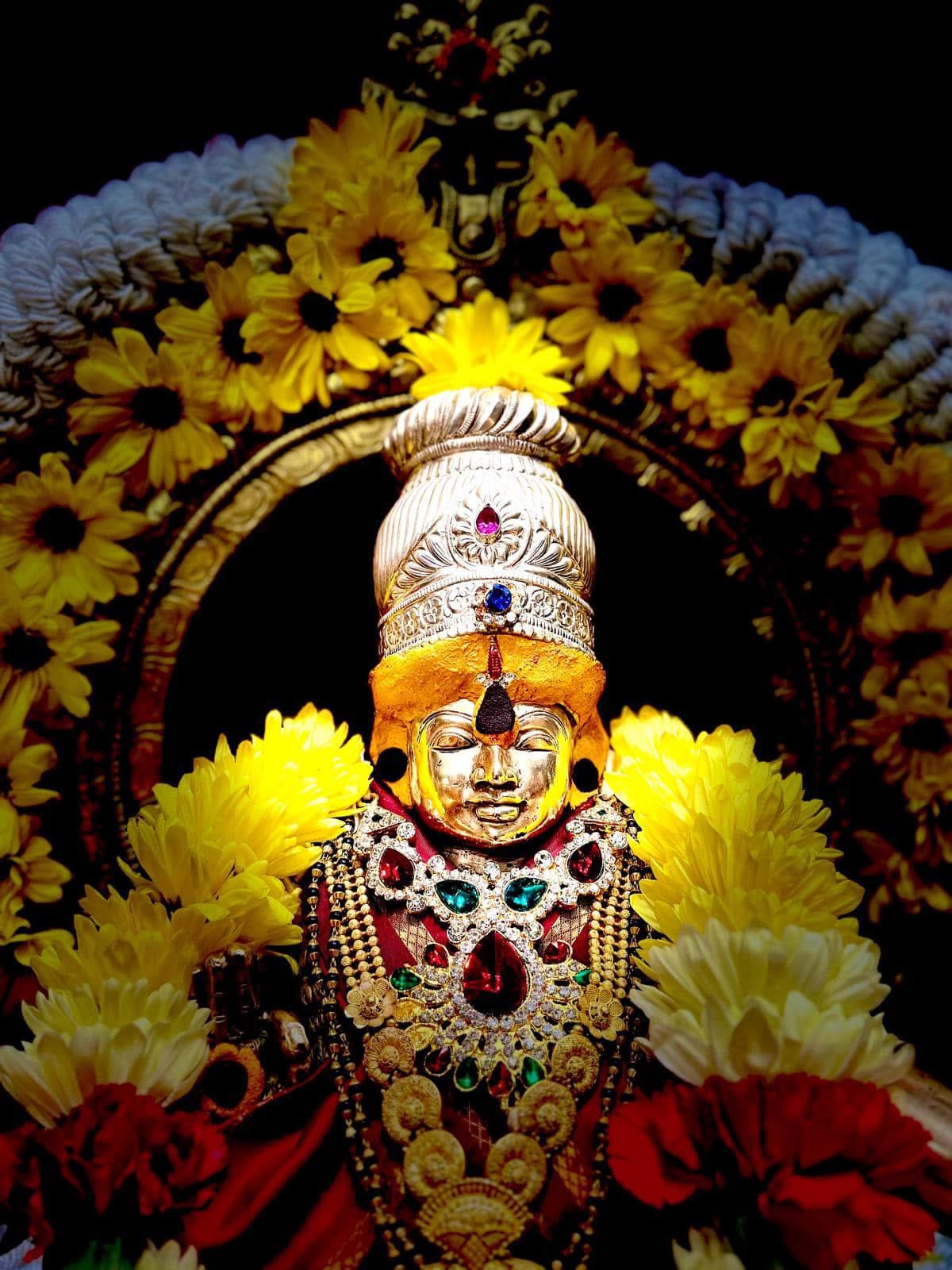
Sri Ayyappan
According to Bhoothanaathopaakhyaanam, the Purana which describes the legend of Lord Ayyappa, two divine personalities, Datta and Leela were husband and wife. While Datta wanted to enter spiritual life, Leela, under insatiable lust, was against it. They cursed each other and degraded themselves to be born as buffaloes.
As a result of intense penance, Leela, born of a demoniac Asura with a she-buffalo head and a human body, obtained a boon from Lord Brahma that only a son born to Lord Shiva (male) and Lord Vishnu (male) could kill her. Due to this boon, she became haughty and egoistic, oppressing the three worlds and putting herself on the throne of Indra, the King of the Devas.
The Devas and Sages were assured by Lord Vishnu that their oppression would be relieved as they prayed for protection. Meanwhile, the Devas obtained help from the demonic Asuras (their eternal enemies) to churn the Ocean of Milk so that they could obtain the special Amrita, which would relieve them of the curse placed on them by Sage Durvasa.
However, the Asuras forcibly took away the Amrita, not allowing the Devas to release themselves of this curse. In order to distract the Asuras, Lord Vishnu thereupon assumed the form of an enchantress called Mohini.
The Asuras fell an easy victim to her charms and Mohini deceptively took away the Amrita and handed it over to the Devas. Thereupon Lord Shiva wanted to see that form of Mohini and seeing the most enchanting form fell in love with her form. A son, Dharma Shastha was born to them. Thus the impossible condition for the destruction of the demoniac Mahishi – the she buffalo – was materialized.
SABARIMALA SRI DHARMASASTHA
Sabarimala Sri Dharmasastha, symbolizes the united spirituality and joined vibrant energies of both Hari (Vishnu) & Hara (Shiva) giving the name "Hari Hara Puthra." Pilgrimage to Sabarimala in Kerala, symbolizes the journey to Moksham (eternal bliss). The journey of a spiritual candidate to Sabarimala is difficult and adventurous. Pilgrims observe severe austerities, wearing rudraksha or tulsi bead strings and trek up the forest to reach the temple.
PATHINETTAMPADI (18 HOLY STEPS)
lrumudi (two compartments) is the only traveling kit which a pilgrim carries on his head during the pilgrimage. The front compartment is for keeping all the puja articles and offerings to the Deity while the rear part is meant to hold the pilgrim’s personal needs for the journey. Only those who fast for 41 days are allowed to carry it. Without the Irumudi one is not allowed to step onto the holy 18 steps at the Sannidhanam.
One popular belief regarding the 18 steps or Pathinettampati is that the first 5 steps signify the five senses, the next 8 the ragas, the next 3 the gunas, followed by vidya and avidya. Crossing these would take the devotee closer to self-realization. Finally, at the eighteenth step, the devotee is facing the image of Lord Ayyappa.
A circumambulation brings the devotee in front of the sanctum sanctorum, giving a sense of accomplishment and utter peace. The culmination of the pilgrimage is marked by Nei Abhishekam, or bathing of the idol in ghee. The ghee-filled coconut, which the pilgrim has carried in the front section of the Irumudi is broken, and the ghee is offered to the Deity. Another important Abhisheka is of Vibhuti, which is also brought by the devotee in the Irumudi.
Every evening, Shri Ganesha Temple conducts Ayyappa Abhishekams and Padi Pujas, continuing for 41 days (Mandala Kalam). As part of the Ayyappa Mandala Season, a number of special pujas are also performed, including Shasta Preethi, Kalabha Abhishekam, Pushpa Abhishekam, Villaku Puja, and Ashta Kalasha Puja. It is tradition for Ayyappa Swamis who have put on the sacred Mala on Mandala Masa Celebration Day to perform the Irumudi Yatra rituals under the guidance of the Guru Swami, and then come inside to offer the dravyas and complete the darshanam with the traditional Nei (Ghee) Abhishekam. SGT Mandala Season coincides with Sabarimala Temple's rituals in the Malayalam month of Vrischikam.
Makara Jyothi is a star worshiped by pilgrims at Sabarimala Temple in Kerala on Makara Sankranti every year. It is believed that the deity Ayyappan asserts himself as Makara Jyothi to bless his devotees. Sri Ganesha Temple starts with the Thiruvabharana Yatra procession followed by the special “Nei Abhishekam” and Raja Alanakram, and Padi Puja.
Ayyappa Jayanti commemorates the birthday of Lord Ayyappa.
Every second Saturday, Ayyappa Masa Puja is conducted. Ayyappa Bhakthas come together to sing Sharana Gosha as the Ayyappa Abhishekam takes place, followed by Bhajans and Padi Puja. The puja concludes with the recitation of Namaskara Slokham and Mangalam.
